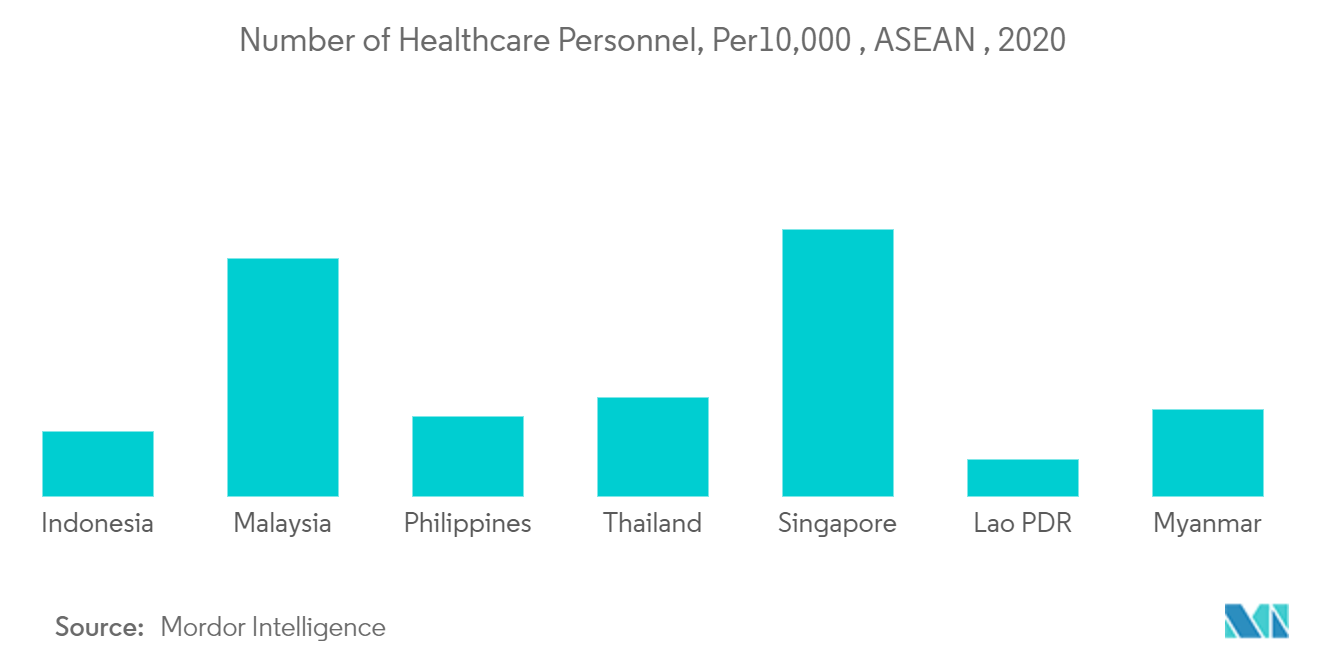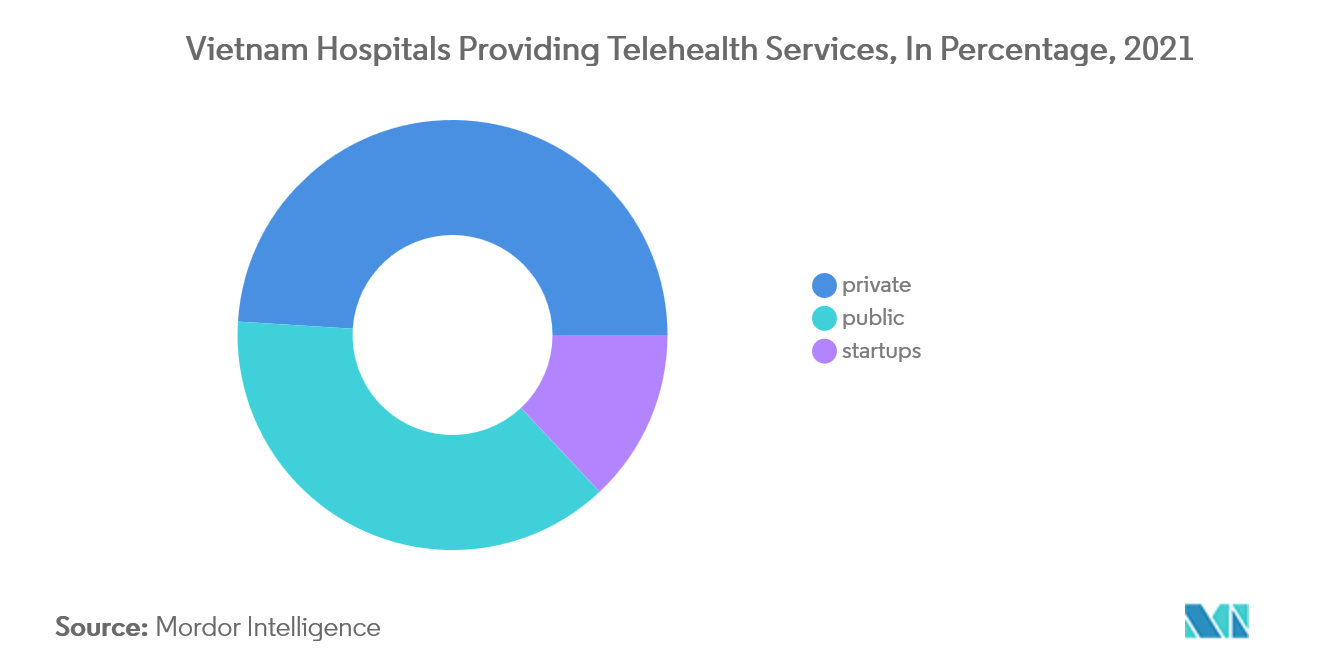Market Trends of Telehealth Services Industry in ASEAN
This section covers the major market trends shaping the ASEAN Telehealth Service Market according to our research experts:
Shortage of Healthcare Personnel is helping telehealth market to grow
The shortage of healthcare personnel is positively influencing the demand for telehealth in the ASEAN countries. The ratio of doctors per person in Thailand and Indonesia is 0.4:1000. Telehealth has improved the patient's access to healthcare, especially in archipelago nations like the Philippines and Indonesia. It has also helped cater to the rural areas where medical infrastructure and services are less available. Moreover, the growing geriatric population and increasing prevalence of chronic diseases in South East Asia are contributing to the growing demand for quality healthcare.
The ASEAN telehealth market accounted for the largest revenue share of 50.4% owing to the rising adoption of telemedicine platforms by healthcare practitioners. Telehealth was adopted by healthcare practitioners in order to reduce the growing burden on healthcare facilities and resources. Increasing demand for reducing hospital admissions and improvements in hospital workflow is propelling the adoption of telehealth technologies among healthcare providers, which will lead to growth in this market.

Vietnam Government Boosting Telehealth Market by Increasing Digi-health Services in Public Hospital
More than 92% of Vietnam Public hospitals have outsourced to local IT companies such as FPT, Link Toan Cau, Dang Quang and OneNet to develop digital solutions for their facilities. Private hoispitals are contributing more to the telehealth services as compared to the poublic hotels and startups are performing at smaller stage currently. Since June 2018, Vietnam has set a clear target that, by 2025, 95% of Vietnamese population will have Electronic Medical Records, currently in 2021, there are 24 provinces implementing EHRs in Vietnam, six of which officially considered the 'piloting EHR provinces' . Healthcare digitalisation continues to facilitate the enhancement of operational efficiency and medical outcomes in public hospitals.
After introducing compulsory insurance, Vietnam now aims to grow the coverage rate of health insurance, setting the goal of reaching 95% in 2025. Nevertheless, out-of-pocket expense ratios in Vietnam are some of the highest in ASEAN, which puts considerable financial pressure on lower income households.


